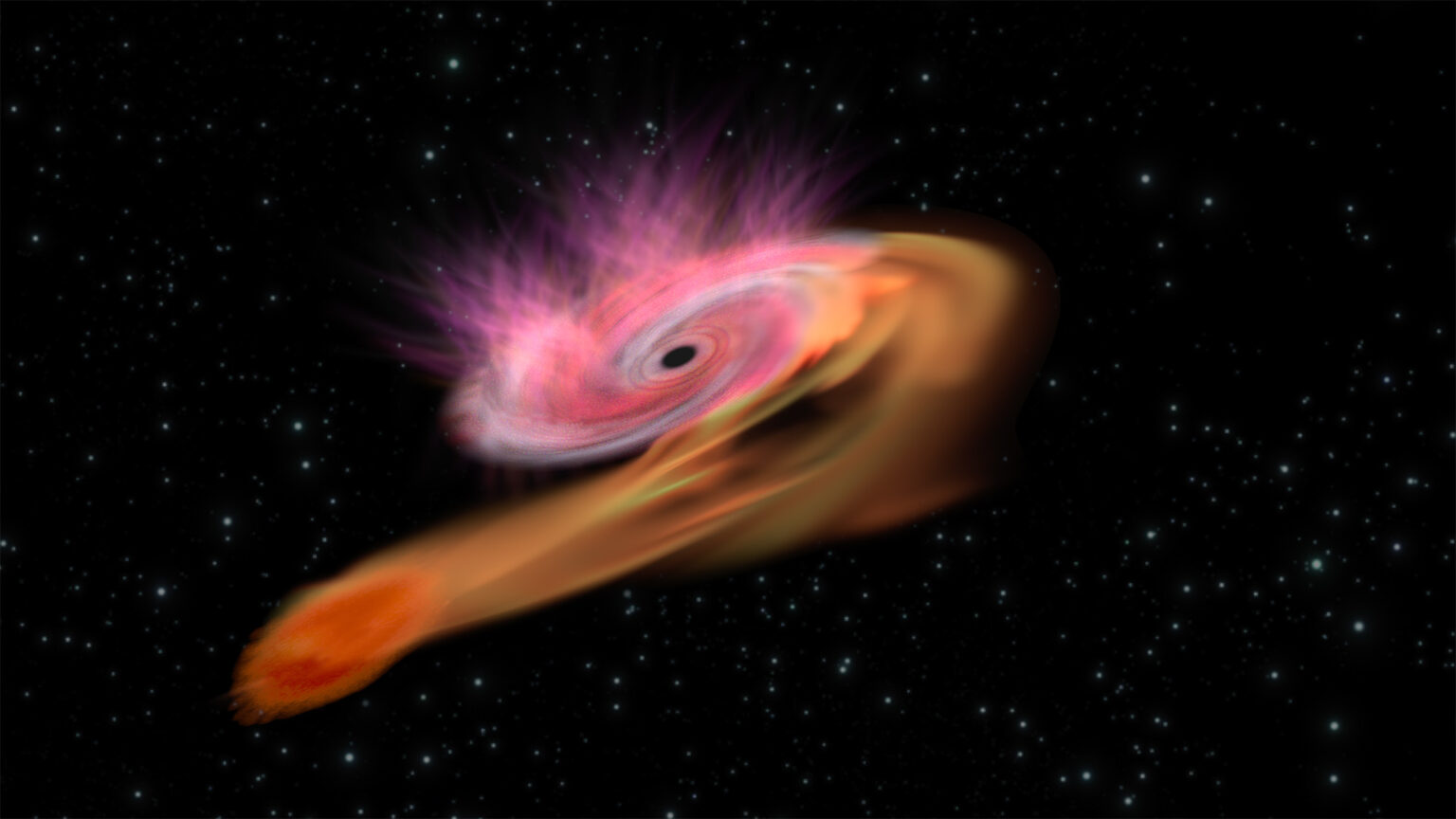Astronomers are eager to learn more about the nature of the absorption of stars by supermassive black holes. They are investigating a tidal disruption event located relatively close to us to do this.

Tidal disruption event
An international team of astronomers conducted multiwavelength observations of AT 2023clx, the closest tidal disruption (TDE) to Earth. The results of the study, published on January 22 on the arXiv preprint server, provide important information about the properties of this event.
TDEs are astronomical phenomena that occur when a star passes close enough to a supermassive black hole and is torn apart by the tidal forces of the latter, causing a process of destruction. After that, the remnants of the luminary begin to fall on its killer and cause a flash of radiation, which signals that something has happened.
Located at a distance of 155.8 million light-years from us, in the core of the galaxy NGC 3799, AT 2023clx is the closest TDE known from optical observations. It was initially identified as a transient in 2014, and in July 2023, it was attributed to a tidal event. With the maximum luminosity of the black body at only 4.56 tredecillion erg/s, this tidal phenomenon is one of the weakest known.
Observations of AT 2023clx by various instruments
Considering that AT 2023clx is a newly discovered TDE, very little is known about its properties. That is why a group of astronomers led by Panos Charalampopoulos from the University of Turku in Finland conducted an extensive study of the tidal event in the optical, near infrared and ultraviolet ranges.They used various space telescopes and ground-based observation facilities, including NASA’s Swift spacecraft and the Northern Optical Telescope (NOT).
Observations have shown that AT 2023clx has a peak absolute magnitude of −18.25 in the g-band and a maximum bolometric luminosity of 32.4 tredecillion erg/s. This makes it a tidal disturbance of intermediate luminosity. A supermassive black hole weighs as much as 1 million Suns.
According to the study, AT 2023clx reached its peak in 10.4 days, making it the fastest growing TDE known to date. Astronomers suggested that such a rapid increase was caused by the destruction of a very small star (less than 0.1 times the mass of the Sun) with a collision parameter of about 0.8.
Spectroscopy revealed a slowly cooling blue continuum, as well as wide lines of Balmer and helium, which are usually observed in tidal explosions. The lines slowly become narrower over time as their luminosity decreases, and this is also commonly observed in known TDEs.
Summarizing the results, the researchers note that AT 2023clx is the result of the tidal decay of a low-mass, small-radius star with a low central concentration close to complete decay, but still below the critical value. They add that such a decay should show a sharper rise and a smaller decrease in the light curves than other stellar decays.
According to phys.org
Follow us on Twitter to get the most interesting space news in time
https://twitter.com/ust_magazine


